From Wang Jiajia at SPURS Gallery to Meditations in an Emergency at UCCA, the best from GWBJ’s fourth edition
UCCA Center for Contemporary Art
Meditations in an Emergency

UCCA’s first show of the year proves its ambition to be an institution at the forefront of connecting shared public experiences to contemporary art. Twenty-six artists of different generations and nationalities have been hand-picked by UCCA’s six curators who have sprung into action to curate this show in less than a month. The exhibition itself is formed of five sections that tackle various subissues that have arisen during this global public- and mental-health crisis. Due to shipping restrictions, contributions by international artists mostly come in the form of videoworks, offering a rare chance for us to meditate in the darkness with works such as Pierre Huyghe’s Untitled (Human Mask) (2014), in which an uncannily human monkey in a mask wanders in the restricted land of post-disaster Fukushima, questioning received distinctions between human and animal. Many works that appear here for the first time have a strangely beautiful (or sometimes painful) prophetic quality in today’s post-crisis situation. For example, Shanghai-born Amiko Li’s The Purpose of Disease (2020), a mix of photography, installation, and sculptures, charts his investigations into a treatment for a skin rash. Paintings by Han Bing and Zhang Hui also set the reflective tone of this rich and inviting exhibition.
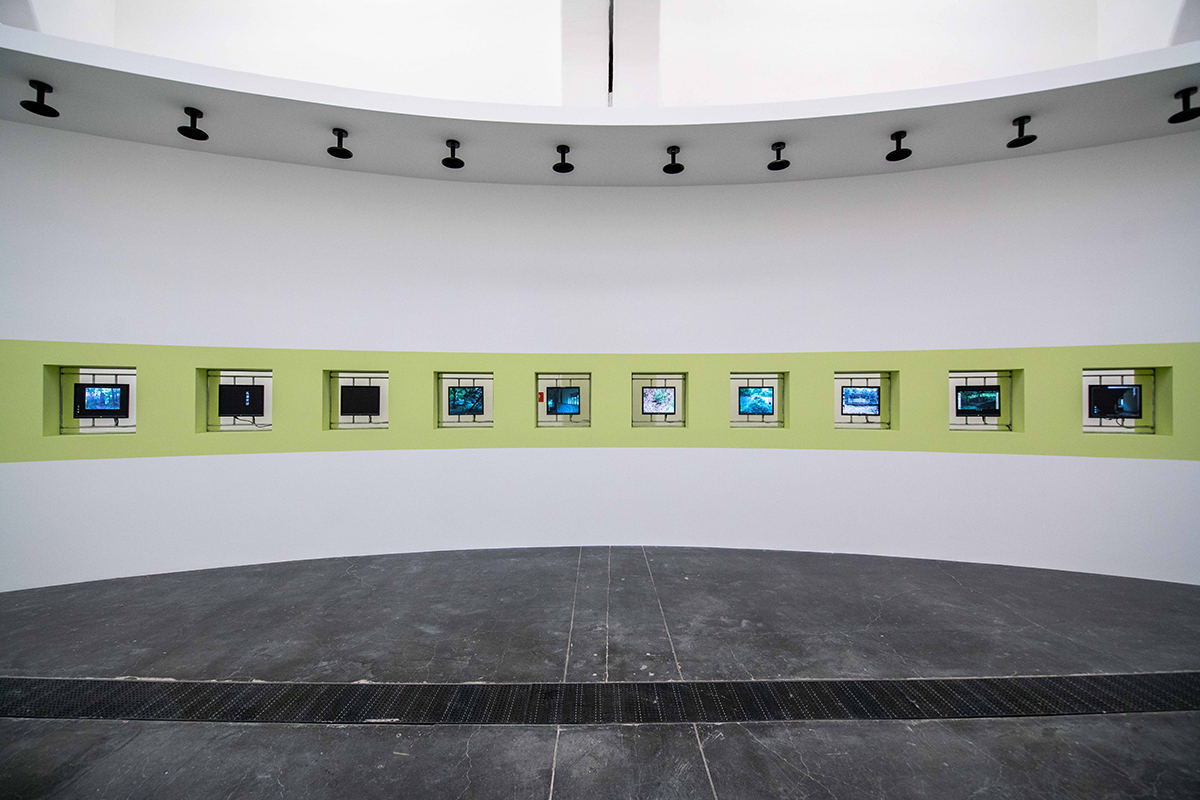
SPURS Gallery
Wang Jiajia, Elegant, Circular, Timeless
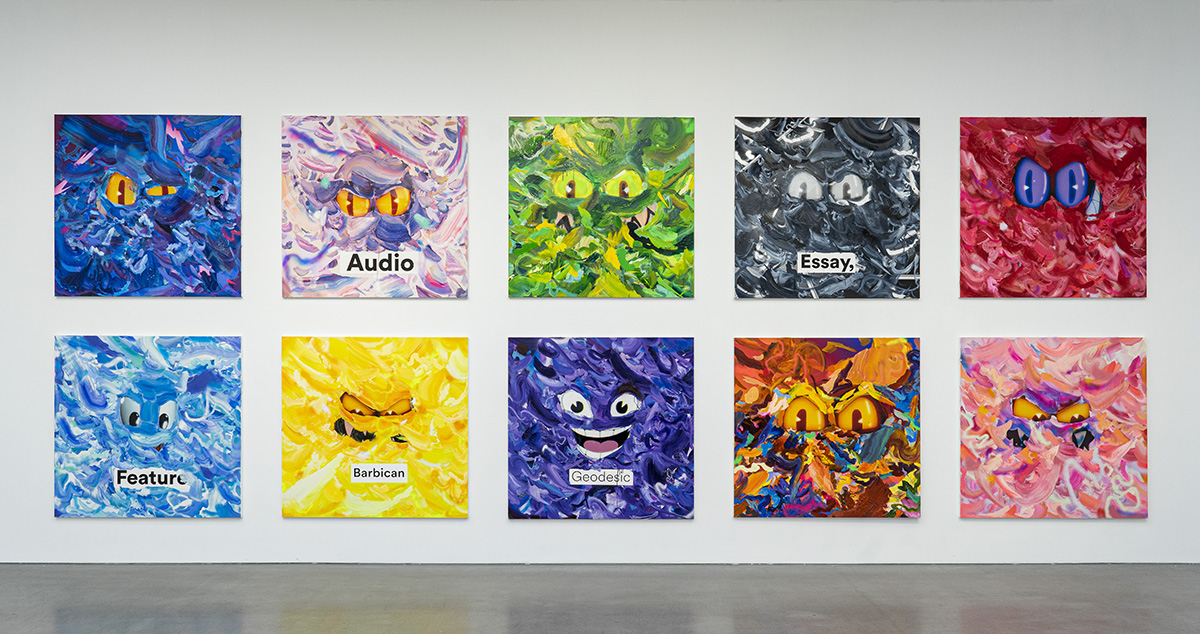
Courtesy: SPURS Gallery
I walk in, only to discover many eyes staring at me in a knowingly-witty way. They are the protagonists in Wang Jiajia’s new body of paintings. “We were told as children that looking into someone’s eyes is good manners”, he says, and these works acknowledge my presence so pressingly that I almost feel a chill. Thirteen pairs of eyes hidden behind layers of oil and spray paint, acrylic and resin are reminiscent of the evil characters in cartoon visuals. But then the vibrant colour, the gestural strokes, the glossy finish, the appropriated digital text… yell ‘Pop’. But can ‘Pop’ make one feel the presence of evil, feel unsettled? In search of an answer, I simply stare back at these multiple eyes. But no one wins; we are literally just looking at each other. What’s worse, they seem to be ganging-up on me. Uneasy, a bit daunted, yet unmistakably attracted – these are my mixed emotions when confronted with Elegant, Circular, Timeless.
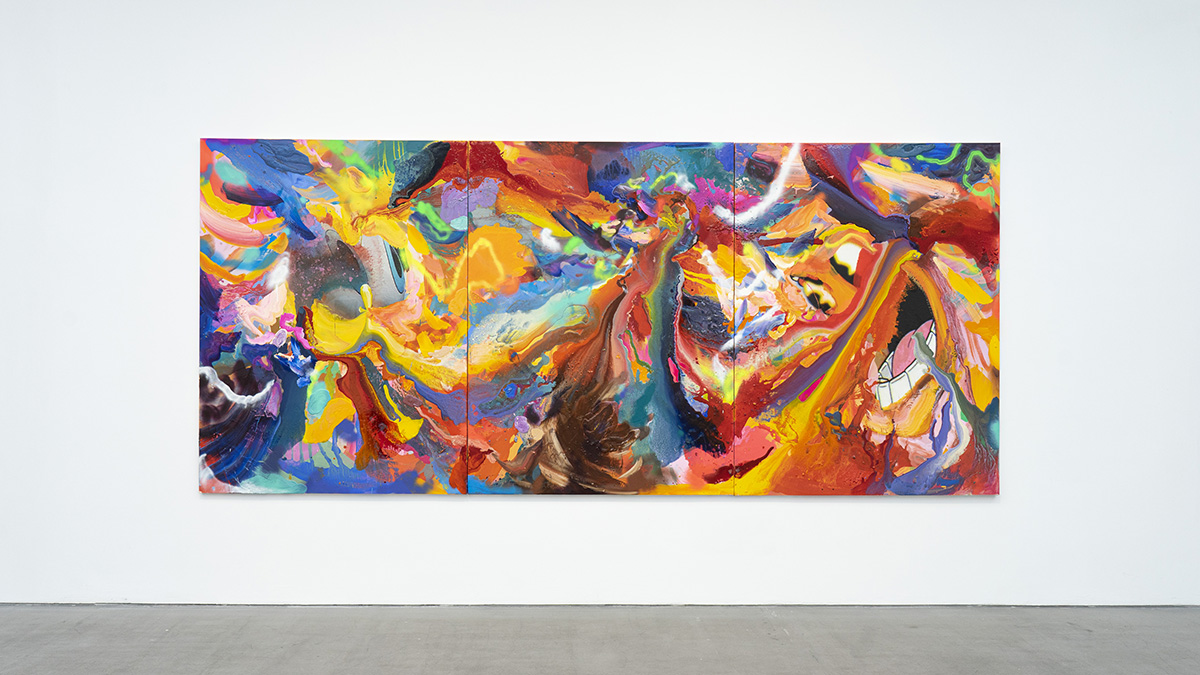
Galleria Continua
Fifteen Years of Galleria Continua in China: To Be Continua
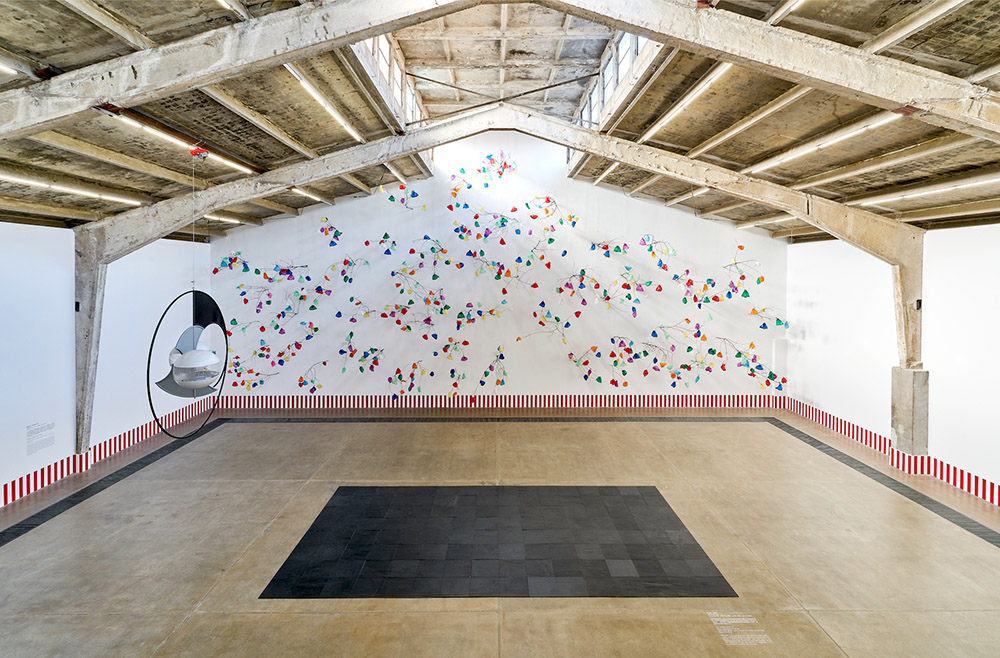
Continua, installation view.
Courtesy: Galleria Continua
Challenging and realising the impossible has been the DNA of this gallery since its birth in a former cinema in San Gimignano, Italy, 30 years ago. It has carried that very spirit with it since landing in Beijing’s 798 district in 2004. Back then the area was considered to be part of Beijing’s outskirts; nothing like the world-famous ‘art district’ it is today. The ongoing Fifteen Years of Galleria Continua in China celebration program started back in October 2019 – it presents key works by artists that have been significant for the Beijing space in its 15-year history, with new additions each month. During GWBJ, Daniel Buren starts the first of a series of monthly on-site interventions deploying his signature stripes and colours, both outside the gallery entrance and throughout the gallery space. Kader Attia and Hans Op De Beeck present a new videowork each month – and secretly I’m beginning to think that the increased circulation of masterpiece videoworks is one of the true silver-linings of this pandemic (thankfully digital files don’t have to be quarantined). I entered a hypnotic and deeply moving state in front of Hans Op De Beeck’s work Thread (2015) today – aren’t we all connected right now? However much the reverse might seem to be the case.
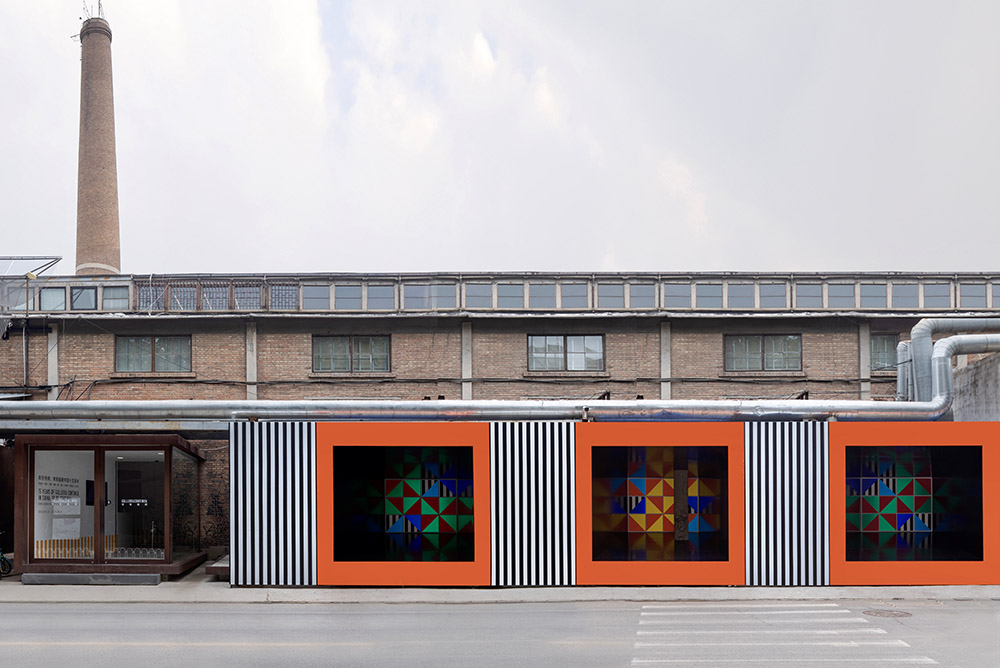
Continua, installation view.
Courtesy: Galleria Continua
Beijing Commune
Ge Yulu
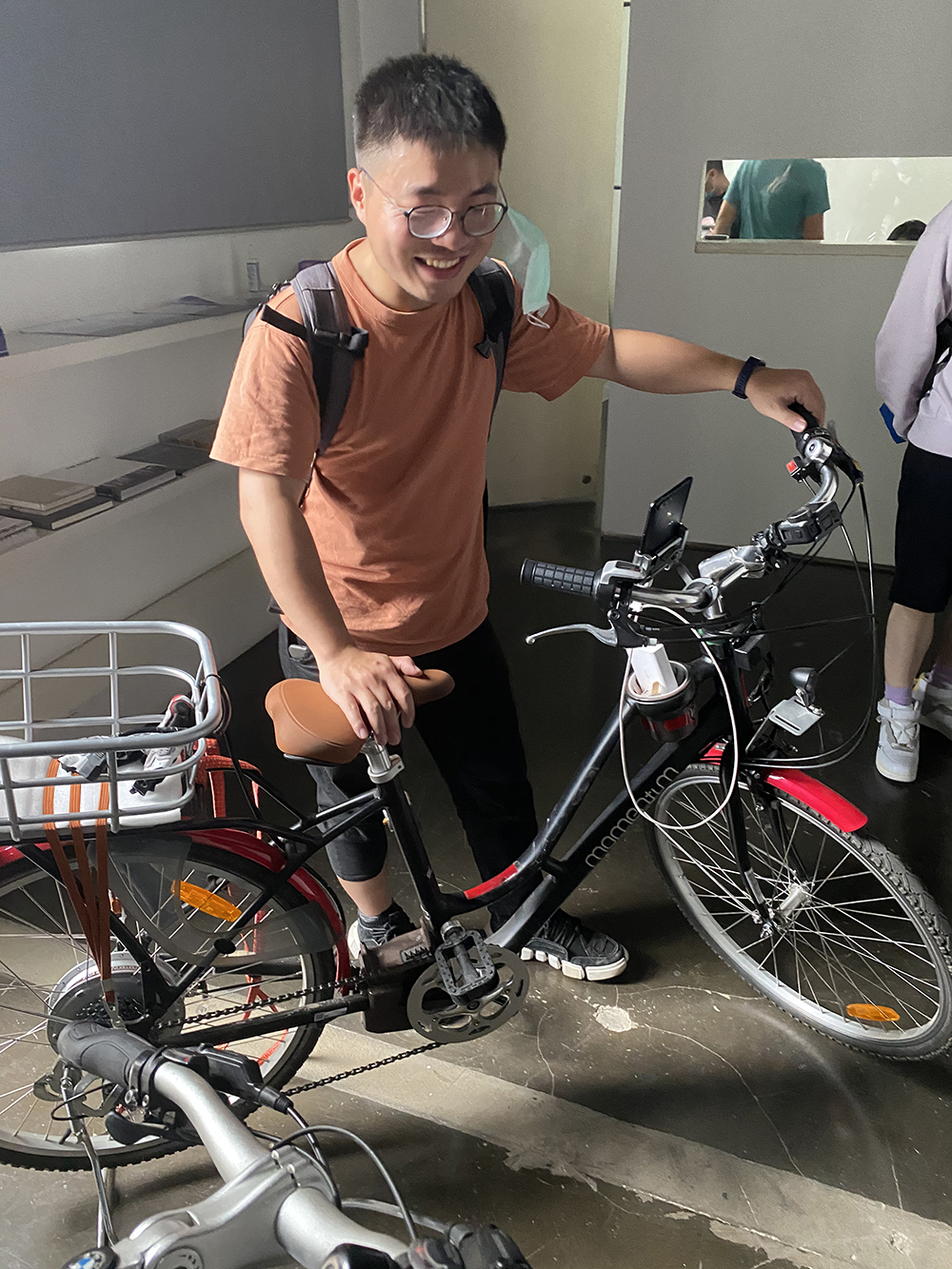
Courtesy Feng Boyi
Living in a megacity like Beijing, where crossing the street can take up to five minutes, makes one seriously question the scale of a single human body and what can be achieved with it. Ge Yulu is obsessed with critical thinking about the agency of the individual. And one work in particular has made him a well-known figure in China’s mass media: he manually put up a street sign reading Ge Yu Lu (lu means ‘street’ in Chinese) on the outskirts of Beijing; it went unnoticed. In this first solo exhibition he further engages his body and taps into one of the essentials of modern living – electricity, something we take for granted, especially when standing in a well-designed gallery space. Although that was not the case today, when I stepped inside at 11am. Because Ge Yulu was in the middle of riding a bicycle that converts his movement into electricity, to be stored in batteries. He started from his home on the outskirts of Beijing at 10am and will do so every day for the duration of the exhibition. The batteries then provide the electrical energy to power the show. When he arrived at 4pm, he literally lit up then show. Which itself contains digital clips of his previous works in the exhibition space, which often place his body in direct engagement with public urban life.
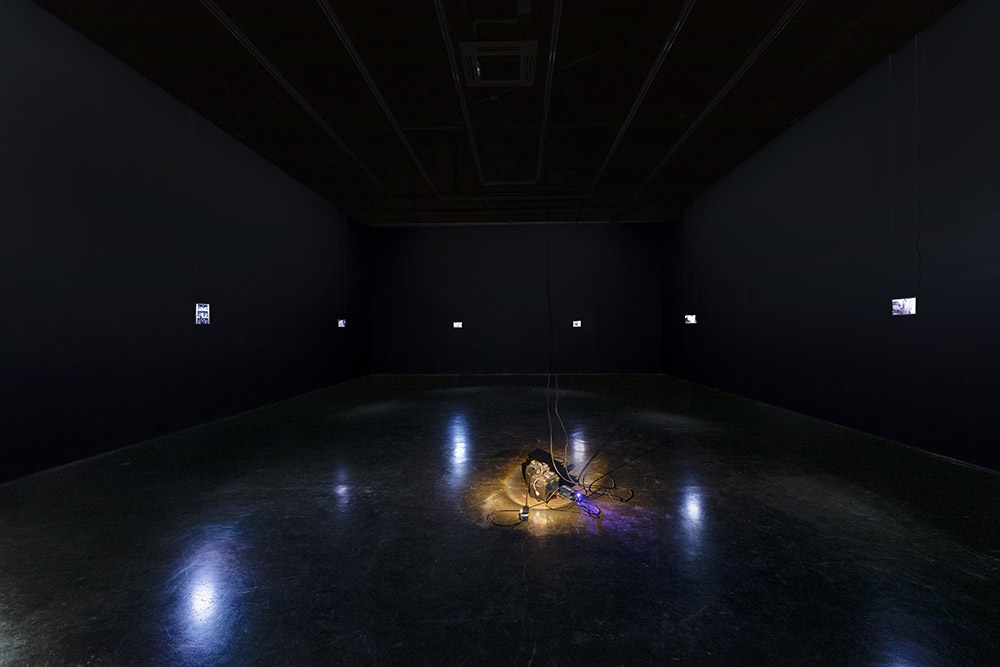
Courtesy: Beijing Commune
Hive Center for Contemporary Art
Pu Yingwei, Time, History, Why We Fight
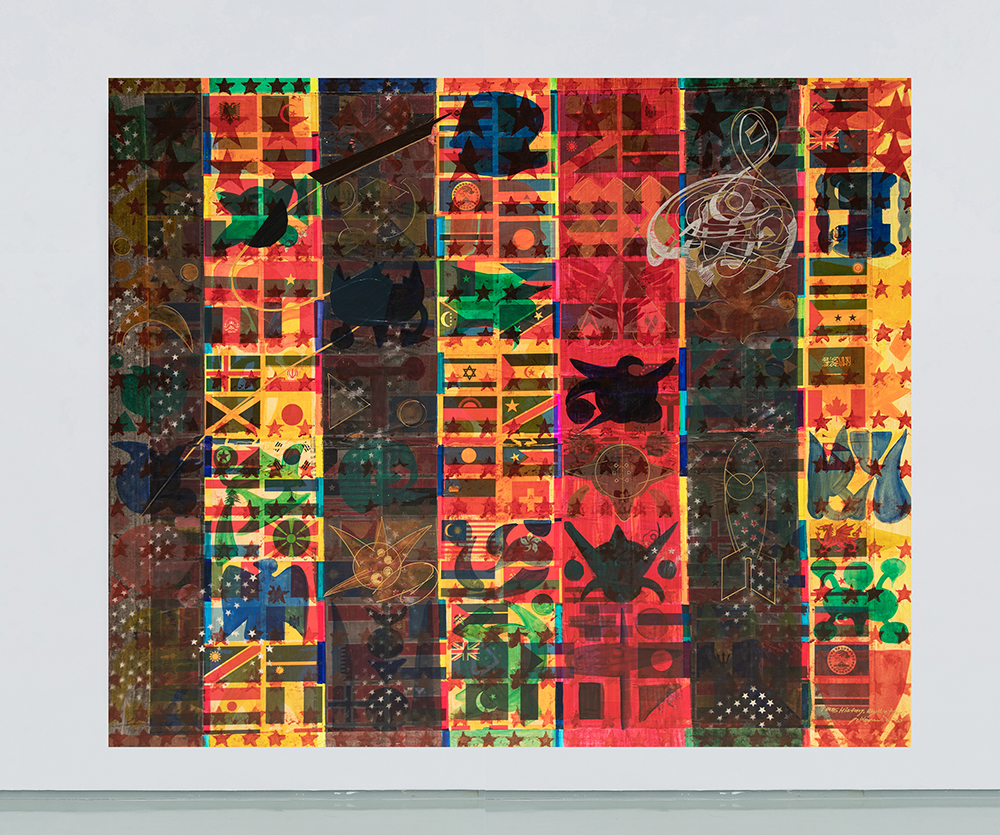
The exhibition title reads forcefully both in English and Chinese. It sounds like the opening line of a manifesto. These three elements are critical to the thinking and dynamic oeuvre of Pu Yingwei, in paintings, videoworks, installation and non-fiction writing. There’s no doubt that the artist is preoccupied with identity- and geopolitics. His new series of monumental paintings reminds me of the ‘Political Pop’ that was once so instrumental in Chinese contemporary art yet has now lost traction. Pu Yingwei decisively layers Russian letters over English letters, mostly to spell out everyday words in French. The symbolic power of Russian Constructivists is still alive in our collective consciousness in China (just take a look at the slogans on Beijing billboards), which only serves to accentuate the violent clash of the imagery. Stamps and currency bills, no longer so visible these days, are brought back to life in his paintings. So are national flags. Another section of the exhibition presents what the artist describes as ‘my inner worlds’: from an older videowork showing him with his father, broken and destroyed painting frames from his previous shows to a more recent video featuring the artist learning to sing a Cantonese song (think Hong Kong in 2019). Pu Yingwei is a living example how being politically engaged is still possible for young artists in China today.

Courtesy: Hive Center for Contemporary Art